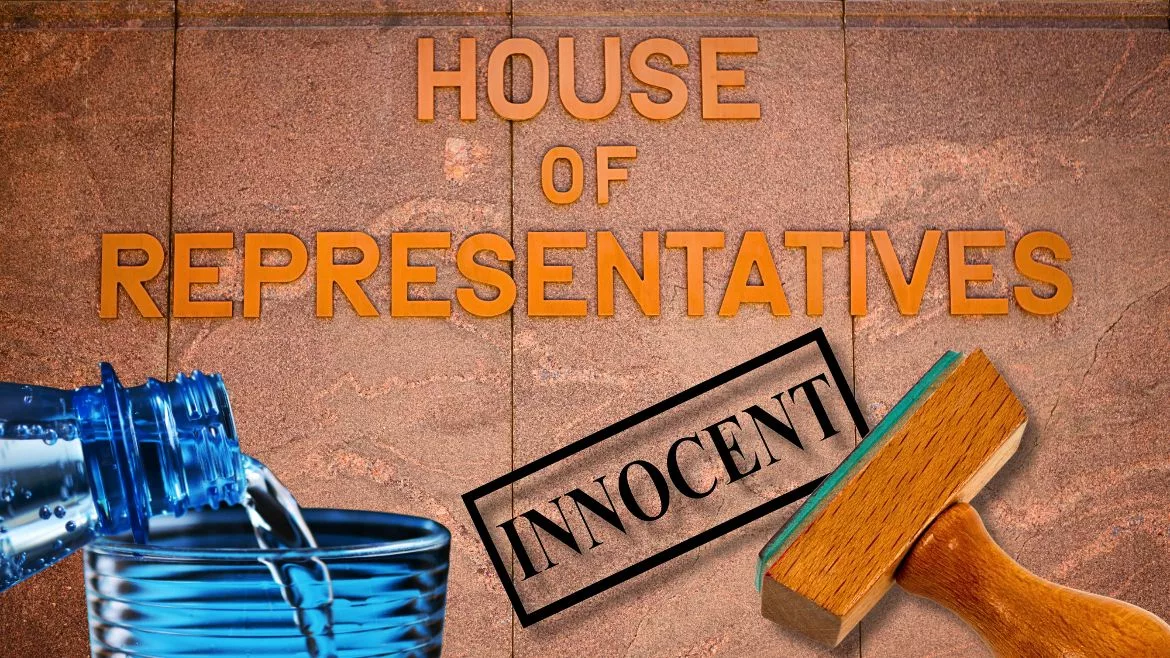News
Bill Shielding ‘Passive Receivers’ of PFAS from Lawsuits Filed
House Lawmaker Introduces the Water Systems PFAS Liability Protection Act.

The day after the first federal rule on per- and poly-fluoroalkyl (PFAS) substances within drinking water were made public, a bill was introduced in the House of Representatives that provides protections from lawsuits for PFAS contamination for water system entities that are not PFAS polluters but ‘passive receivers' of PFAS.
On April 11, 2024, H.R. 7944, the Water Systems PFAS Liability Protection Act, was introduced in the House by Rep. John Curtis (R-UT). The bill would “exempt certain entities from liability under the Comprehensive Environmental Response, Compensation, and Liability Act (CERCLA) of 1980 with respect to releases of” PFAS substances, which are widely used, long-lasting chemicals, the components of which break down very slowly and are found in the blood of people and animals all over the world.
On April 10, 2024, the Environmental Protection Agency (EPA) issued a final rule that sets drinking water standards from 4.0 parts per trillion to 10 parts per trillion for five individual PFAS substances, including PFOA, PFOS, PFNA, PFHxS, and HFPO-DA (also known as “GenX Chemicals”).
On April 19, 2024, the EPA followed the first PFAS rule with a second PFAS rule that designated the PFAS substances perfluorooctanoic acid (PFOA) and perfluorooctanesulfonic acid (PFOS) as hazardous substances because those chemicals have been linked to cancers, immune and developmental damage to infants and children, and has some impact on the liver and heart.
However, prior to those rules, water systems have said that along with the EPA’s PFAS regulations, the federal government needs to institute “passive receiver exemptions” that protect water systems that are not the originators of PFAS contamination from liability for PFAS chemicals that pass through their systems.
In addition, some water systems have said the EPA’s PFAS rules under CERCLA “victimize water utilities,” Kenneth Waldroup, executive director of the Cape Fear Public Utility Authority (CFPUA), of Wilmington, N.C., told The Driller. “We are passive receivers of PFAS” and while CFPUA “can comply with that rule, CERLA doesn’t offer the flexibility” CFPUA needs to protect itself from lawsuits, according to Waldroup.
The bill focuses on protecting passive receivers, according to Curtis, who said in a statement that it ensures “those who profit from these chemicals bear the cost of their impact” and not the water systems and, ultimately, consumers. “This bill prevents the burden of industrial irresponsibility from falling on the shoulders of Utah’s families and ratepayers,” the statement says.
The text of H.R. 7944 prohibits any “person (including the United States, any state, or an Indian tribe)” from recovering “costs or damages from a protected entity under” CERCLA “for costs arising from a release to the environment of a covered” PFAS substance unless such a “protected entity acted with gross negligence or willful misconduct in the discharge, disposal, management, conveyance, or storage of covered” PFAS substances.
The bill describes a “protected entity” as a public water system; a publicly or privately owned or operated treatment works; a municipality that has been issued a permit for stormwater discharges; a political subdivision of a state or a special district of a state acting as a wholesale water agency; a contractor performing the management or disposal activities; and other entities described throughout the bill.
For an entity to be eligible for the protections provided by the bill, it must transport, treat, dispose of, or arrange for the transport, treatment, or disposal of a covered PFAS substance “in a manner consistent with all applicable laws at the time the activity is carried out; and during and following the conveyance or treatment of water under federal or state law.”
In addition, the bill requires an entity to manage the disposal of biosolids consistent with the Federal Water Pollution Control Act, as well as conduct other water management activities, including:
The discharge of effluent (flow) in accordance with a permit issued under the Federal Water Pollution Control Act.
The release or disposal of water treatment residuals or any other byproduct of drinking water or wastewater treatment activities, such as granulated activated carbon, filter media, and processed waste streams; or the conveyance or storage of water for the purpose of conserving or reclaiming the water for water supply.
Since its introduction, H.R. 7944 has been referred to the Committee on Energy and Commerce and to the Committee on Transportation and Infrastructure. As of April 29, 2024, neither committee has scheduled any hearings or other actions on the bill.
In addition, while H.R. 7944 is the latest action implemented by Congress to provide passive receivers of PFAS with protections from lawsuits, it is not the first. On May 3, 2023, Sen. Cynthia Lummis (R-Wyo.) introduced S. 1430, the Water Systems PFAS Liability Protection Act, which is nearly identical to the House bill.
Read H.R. 7944.
Looking for a reprint of this article?
From high-res PDFs to custom plaques, order your copy today!






